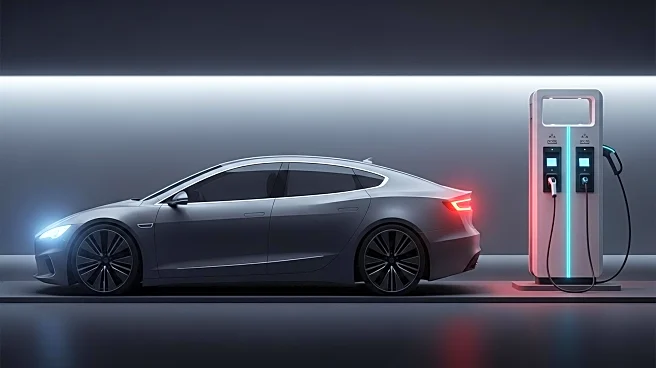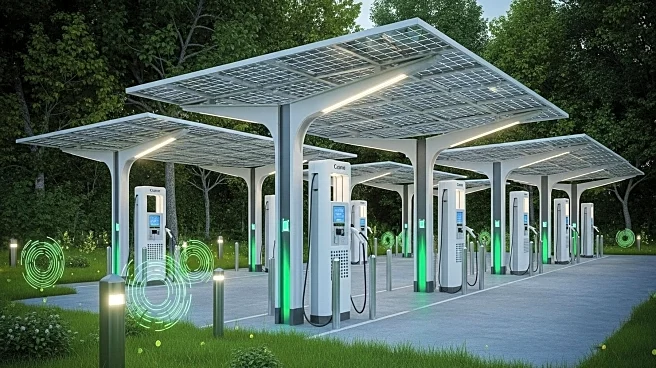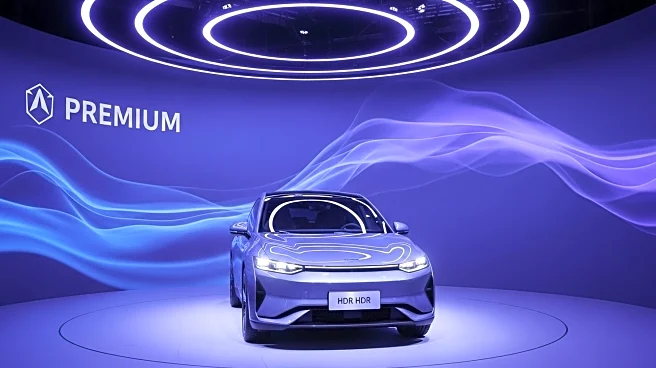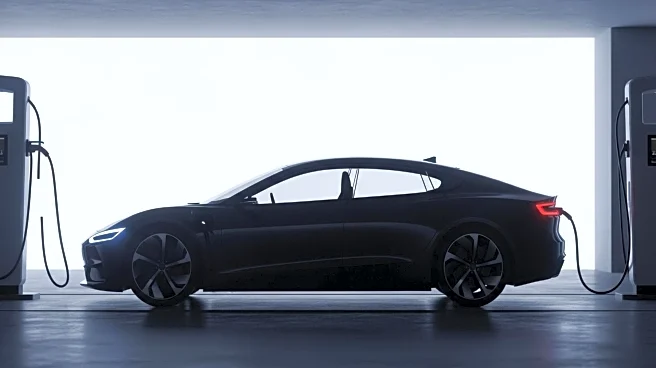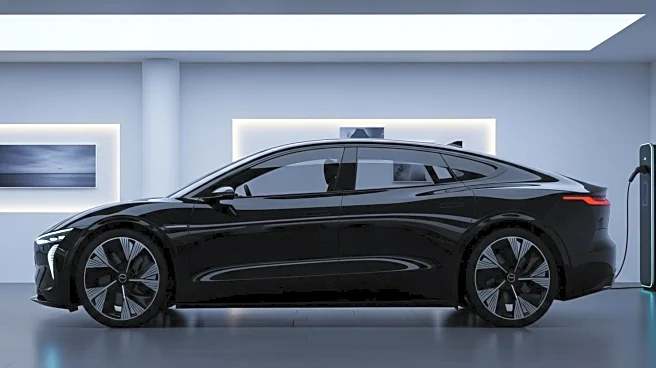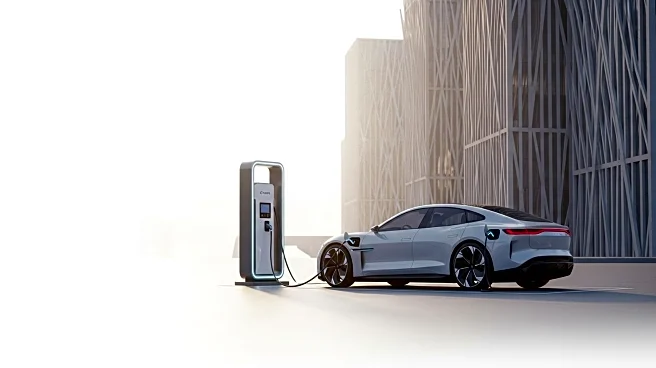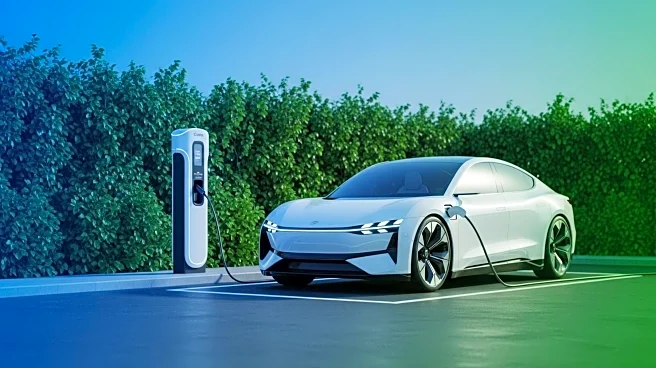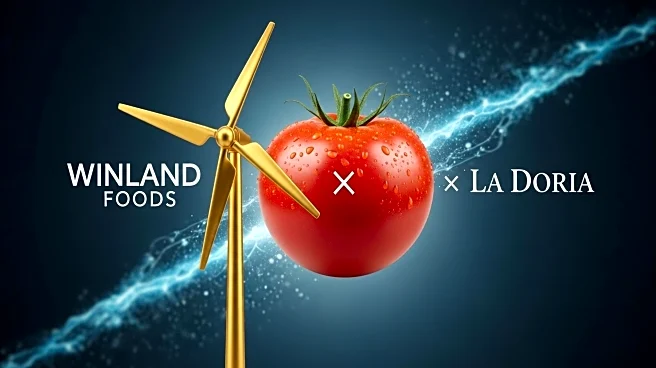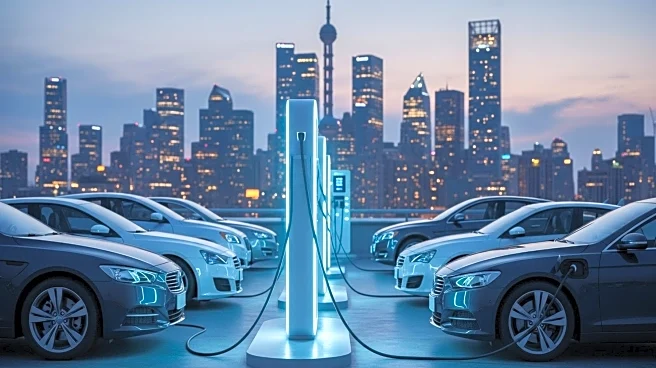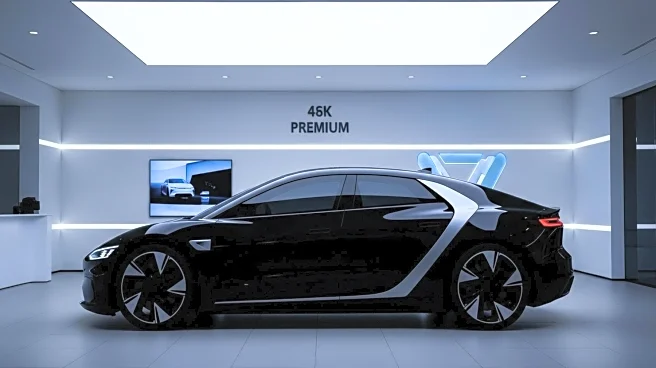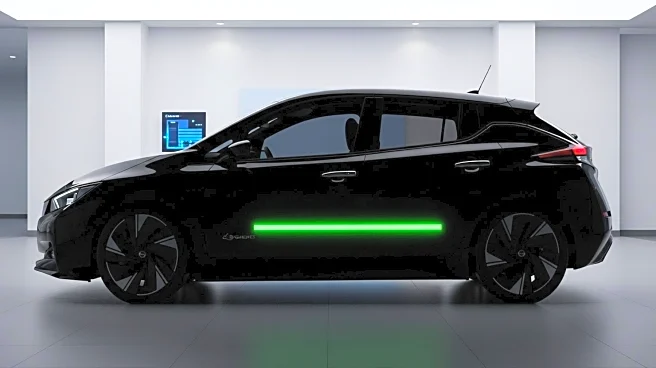What is the story about?
What's Happening?
Nissan has introduced the 2026 LEAF, featuring a complete redesign focused on aerodynamics and dual charging capabilities. The new model boasts a sleek exterior with improved aerodynamic elements, such as a blunted nose and integrated spoiler, reducing the coefficient of drag from 0.29 to 0.26. The LEAF offers dual charging ports, accommodating both AC and DC charging, which allows users to utilize Tesla's Superchargers and public AC chargers. The vehicle's interior has been upgraded with luxurious materials and advanced infotainment systems, including dual screens for navigation and entertainment. The LEAF is available in multiple trims, with the top-tier PLAT+ offering a range of 259 miles, while the mid-tier S+ provides up to 303 miles per charge.
Why It's Important?
The 2026 Nissan LEAF represents a significant advancement in electric vehicle design, emphasizing both efficiency and user convenience. By incorporating dual charging ports, Nissan addresses the diverse charging infrastructure in North America, making it easier for consumers to transition to electric vehicles. The improved aerodynamics and range options enhance the LEAF's appeal to environmentally conscious consumers seeking cost-effective and efficient transportation solutions. This development positions Nissan as a competitive player in the growing EV market, potentially influencing other automakers to adopt similar strategies to meet consumer demands for versatile and efficient electric vehicles.
What's Next?
As the 2026 LEAF arrives in dealerships, Nissan plans to phase out the ARIYA model in the U.S., focusing on the LEAF's market presence. The introduction of a lower-cost S trim is anticipated, which could attract budget-conscious buyers and expand Nissan's customer base. The dual charging system may prompt other manufacturers to consider similar designs, potentially leading to a more standardized charging infrastructure. Nissan's continued innovation in EV technology could drive further advancements in vehicle efficiency and consumer convenience, influencing industry trends and consumer expectations.
AI Generated Content
Do you find this article useful?
